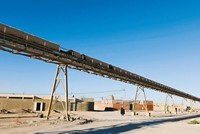Advertisement
Grab your lab coat. Let's get started
Welcome!
Welcome!
Create an account below to get 6 C&EN articles per month, receive newsletters and more - all free.
It seems this is your first time logging in online. Please enter the following information to continue.
As an ACS member you automatically get access to this site. All we need is few more details to create your reading experience.
Not you? Sign in with a different account.
Not you? Sign in with a different account.
ERROR 1
ERROR 1
ERROR 2
ERROR 2
ERROR 2
ERROR 2
ERROR 2
Password and Confirm password must match.
If you have an ACS member number, please enter it here so we can link this account to your membership. (optional)
ERROR 2
ACS values your privacy. By submitting your information, you are gaining access to C&EN and subscribing to our weekly newsletter. We use the information you provide to make your reading experience better, and we will never sell your data to third party members.
Environment
The Future Of Chemicals
by Rudy M. Baum, Editor-in-chief
January 8, 2007
| A version of this story appeared in
Volume 85, Issue 2
This week's issue of C&EN contains three stories that will be of interest to anyone who cares about the future of the chemical industry.
The cover story is our annual feature, "World Chemical Outlook," in which several members of C&EN's Business Department staff endeavor to peer into the coming year and forecast the performance of the global chemical industry (see page 13).
The view is a generally positive one. "Companies in most regions are predicting continued growth," the team writes, "but it is generally a cautious prediction. The caution comes from the belief among producers that even though oil and natural gas prices have come off their peaks, these costs will continue to be volatile. Plus, demand may slow in some regions."
After reasonably strong growth in the chemical industry worldwide in 2006, such an outlook for 2007 is heartening, particularly given the industry's performance through the first half of the decade. Of course, there are clouds on the horizon, with some economists predicting a slowdown, particularly in the U.S., in the coming year. In Europe, the impact of the EU's newly enacted REACH program for regulating chemicals will be closely watched.
Regulating chemicals is the subject of a provocative Point/Counterpoint exchange between Michael P. Walls, managing director for regulatory and technical affairs at the American Chemistry Council, and Joel Tickner, assistant professor in the department of community health and sustainability at the University of Massachusetts, Lowell (see page 34). C&EN Senior Editor Cheryl Hogue coordinated the feature.
Walls argues that chemicals are "one of the most pervasively regulated businesses in the country, and rightly so. Because if chemicals are not managed safely, they can have significant health and environmental consequences." Walls believes that current statutes, particularly the 1976 Toxic Substances Control Act (TSCA), and other programs—for example, the High Production Volume (HPV) Challenge Program—provide EPA with adequate authority and information to protect human health and the environment.
Tickner is concerned about the buildup of "toxic chemicals in our environment and their impact on human and ecosystem health." While Tickner agrees that "chemicals play a critical role in the global economy and our quality of life," he maintains that "the problems that arise with their use ... indicate a failure of both government policy and design. It is time to update our 30-year-old chemicals policy."
Walls believes that REACH will stifle chemical innovation and that efforts to establish REACH as the new international standard for chemical regulation must be understood as an effort by Europe to blunt the U.S. industry's competitive advantage. Tickner disagrees with Walls's position that U.S. chemical regulation currently is adequate, maintaining that "our chemical industry and our government risk being marginalized in a global market that is increasingly concerned about the health and environmental implications of industrial substances."
As both Walls and Tickner touch on the HPV Challenge Program, it seems appropriate that this week's issue also contains a story by Hogue on the status and outlook for that program, which had a completion date of 2005 (see page 40). There is reason to be concerned. "Some companies are just now submitting plans for voluntary tests on their products," Hogue writes. "Other firms that had pledged to come up with the chemical data have withdrawn from the program. Still others ... are waiting for EPA to require testing on their products through a formal regulation. In addition, manufacturers and importers are simply not volunteering to test some HPV chemicals."
It is hardly surprising that a voluntary effort to develop health and safety data on 2,800 chemicals produced in large volumes-coordinated by a government agency, an industry trade association, and an environmental advocacy group-would hit some snags during its implementation. Working out the tensions among these stakeholders in this critical program is vital to the future of the U.S. chemical industry.
Thanks for reading.
Views expressed on this page are those of the author and not necessarily those of ACS.






Join the conversation
Contact the reporter
Submit a Letter to the Editor for publication
Engage with us on Twitter